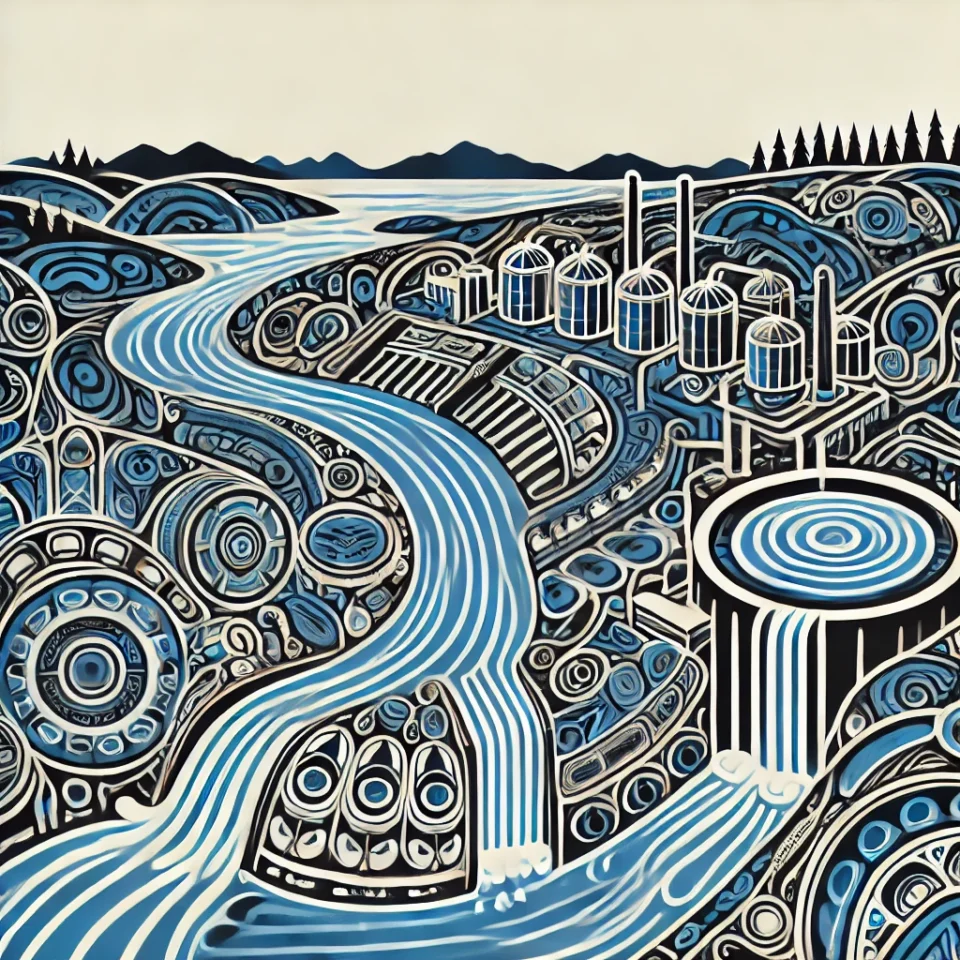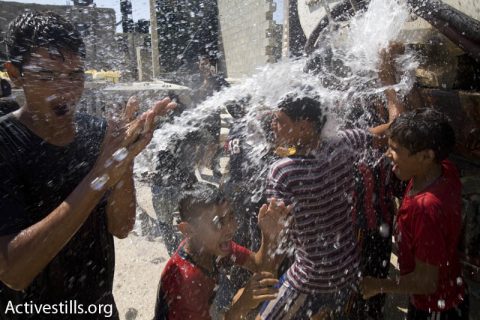
Foto: Activestills.org
Marian Willuhn
Growing Demand
Since 1948, the population in Israel and the occupied Palestinian territories have increased from less than two million to over ten million combined, creating an accelerating need for water.
The challenging geological reality of Israel and the occupied Palestinian territories prompts the need for a well-functioning water supply system and indeed the good cooperation of riparian countries. The annual recharge of the aquifers in their territories are 1 300 million cubic meters a year (shortened mcm/y), comparable to the levels of countries such as Lesotho and Gambia. Norway has a recharge of approximately 96 000 mcm/y, accessible for our 5 million inhabitants. This water shall cover the needs of the 8.6 million living in Israel and 3.7 million living in the occupied territories together. The population have grown from about 800 000 Jews and approximately 1 million Palestinians in the same area in 1948.
While Israel heavily invested in the development of groundwater resources from the shared aquifer, Palestinian society at the time was impoverished and under the administration of the Ottoman Empire, the British Empire and the Kingdom of Jordan, none of which have assisted Palestine in making similar steps. Palestinian municipalities could not cover the immense costs of hydrologic examinations and deep-well technologies, to develop their own advanced water infrastructure.
By the end of the 1980s the need for water in Israel and Palestine was disproportionally higher than what was naturally available in the region. To fulfil the vital water demands the shared Mountain Aquifer and the Jordan River were overexploited, creating rapid level drops and deteriorating water qualities – effectively fashioning a water crisis, for both states, with entailing regulations of agriculture and industrial use of water. Low water table levels in the Aquifer made the water more receptive for pollutants from fertilizers.
Peace Deals haven’t secured Palestinians Access to Water
With the failure of the Camp David status negotiations the Oslo II Accords continue to provide the modus operandi that regulates the use of water between Israel and Palestine. Most critical is the equitable allocation of water by which the agreement holds that Israel retains 483 mcm/y of the accessible water from the aquifer while Palestine gets the remainder of 118 mcm/y. In reality, Israel has also over extracted its quota for many years, and some years by up to 80 % according to the World Bank. The Israeli national water authority Mekorot then sells a politically approved amount of water back to the Palestinian authority. Some 50mcm/y of water is sold to Palestine in order to meet the minimum needs. Additional quotas are continuously being negotiated tough the diplomatic climate protracts the negotiation process.
Water in Israel is fully state owned. In 1982 the Israeli army handed over the water infrastructure in the West Bank to Mekorot, who as of 2009 operates about 42 wells in the occupied territory. Mekorot not only sells water to Israeli citizens but also sells water to the Palestinian Water Authority. Currently Mekorot is responsible for almost 50% of the supplied water to Palestine and retains a distinct political mandate in the Joint Water Committee (JWC). At times of re-occurring water shortages during the hot and long summers of the region Mekorot shuts off the water supply to Palestinian communities for several weeks or months at a time. According to reports Mekorot does so in order to be able to supply Israeli settlements in the West Bank with sufficient water, avoiding water shortages for settlement residents. This is a severe violation of the Fourth Geneva Convention (Art.:27(3)&55&56) and the First Geneva Convention (Art.:69& 75(1)), prohibiting the discrimination between different population groups in occupied territories and obligating the belligerent occupier to supply vital goods such as water. Mekorot itself denies these claims, stating that settlements do not receive preferential treatment.
The same principle of state-ownership and centralised planning was assumptive in the formulation of the Oslo Accords. In Palestine, however, water is only state-owned by virtue of the Oslo Accords. The low capacity of the Palestinian authority and the harsh conditions of occupation have resulted in lack of water for most Palestinians. According to OCHA about 595 000 Palestinians in the West Bank are disconnected from water or receive water once a week or less. While the average consumption of water in Palestine is determined at 73liters per day (l/d) the fragmented water infrastructure and de-centralised planning leads to extreme differences thus many Palestinians consume less than 10 l/d, while residents of the Jericho region have over 200 l/d (Israel averages 240 l/d for comparison). The WHO recommends a minimum of 100 l/d to maintain a reasonable standard of health, hygiene, development and dignity.
These approximately 300 communities in the West Bank with no or low access to water have to buy trucked water at 30NIS (72NOK) ca. 400 % more expensive than tapped water and of very low quality. As these communities are usually already hardest hit by the suffering Palestinian economy these increased costs have severe effects on the families that need to resort to such measures. Increased water tariffs mean that local business often have to shut down for the dry month, livestock of farmers has to be sold or will die, and costs of food increases as local farmers have to pay more for irrigation. Electricity consumption is also an issue as tanked water from trucks is pumped into large barrels on rooftops using electric pumps, further exacerbating the costs of living in the West Bank. You are likely to encounter houses equipped with hundreds of large black tanks on the roof, combined with the purring noise of the dozens of electric pumps, when walking around East-Jerusalem.
The low availability and quality of water has had severe impacts on public health in the recent years. As the WHO reports, 26% of all reported diseases in the area are the direct result of the poor water quality and 50% of the children in Gaza struggle with parasitic infections or other effects of poor water.
In Gaza the situation is harsh, in 2014 1,2 of the 1,9 million inhabitants were without water after the Israeli bombardments. According to the OCHA aproxiamately 1,2 million in Gaza is still in 2017 in need of humanitarian assistance. At the end of 2016 40 % of Gazas population had access to domestic water supply twice a week or less.
Environmental costs of the lacking infrastructure in Gaza are devastating as waste water is generally led into open pits or rivers polluting the surface soil, which then contaminates crops and livestock consumed by the people. The wastewater should normally be treated in a donated wastewater treatment plant, however the plant cannot operate since Gaza currently has only 4h of electricity per day. Because of this the sewage heavily pollutes the aquifer beneath Gaza further deteriorating its quality and is led into the Mediterranean Sea which caused severe costs for Israel in the past. The sewage has polluted and destroyed the very expensive membranes of the desalination plants in Ashkelon several times per year, moving Israel to agree to attaching Gaza’s treatment plant to Israel’s electricity grid. This step is currently on the negotiation table, but seeing the self-interest of Israel to protects its own water resources, observers are optimistic that an agreement on that matter can be found in a timely manner.
According to a World Bank report of 2009, Palestine displays a high degree of poverty and low economic activity, a situation which not only fosters low-moral and suffers dignity, but also contributes to the radicalisation of young Palestinians without a perspective in life. The same report stated that in improved water supply could produce at least 100.000 jobs directly and numerous more jobs by proxy, ameliorating the situation.
A Technological Solution?
After the years of the water crisis Israel have devoted large assets and expertise to water infrastructure and modern technology in order to avert water shortages from happening in the future. Especially the fickle climate of the region made it increasingly complicated to quota the water effectively for the different domestic and industrial purposes. Around 2005 Israel started its program in desalination technology, enabling the country to produce drinking water from sea water at very low costs of 0.5 USD per cubic meter. Today Israel produces 500 mcm/y of drinking water from this resources with the objective to expand its efforts to 750 mcm/y by 2030.
In the Palestinian Gaza strip there are 18 neighbourhood desalination plants, 13 of which are operated by UNICEF, providing water for some 95 000 people. There are also industrial desalination plants in Gaza, however the import of spare parts for maintenance and repair has been made virtually impossible under the Israeli blockade.
Today the two states are continuing to negotiate about access of water and in light of the new technological advancements these negotiations do not have to be overshadowed by concerns over water security. Water is now available in abundance at reasonable tariffs and it appears to be only a question of diplomacy and infrastructure to remedy the water shortage.
As of January this year, however, a minor revision of the Oslo II Accord is in place which discontinues the necessity of Israeli approval of infrastructure and maintenance projects performed by Palestinian authorities, as long as such matters do not involve higher extraction levels of groundwater from the aquifer. While it is important that Israel concedes to allow Palestine to extract more water in order to remedy the water crisis, this step could at least provide some improvement. It is to hope that bureaucratic impediments of the past that have delayed such projects by as much as three years and de-motivated international donors from fostering such projects will be reduced, so that necessary materials and financial means can reach the beneficiaries in a timely manner.
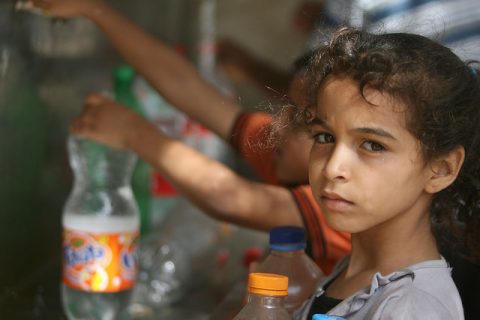
Barn i Rafah samler vann fra en av de offentlige vannpumpene. Foto: Oxfam International

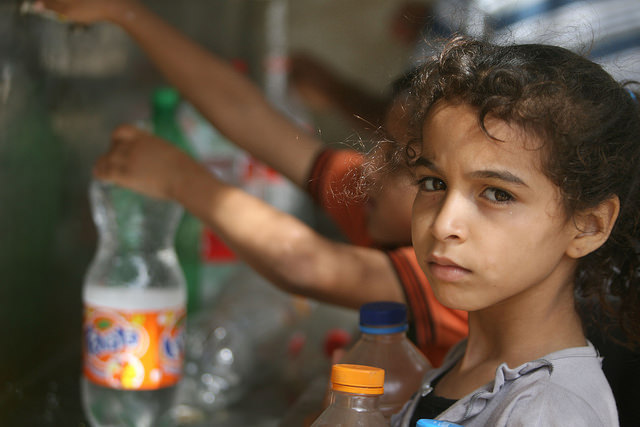
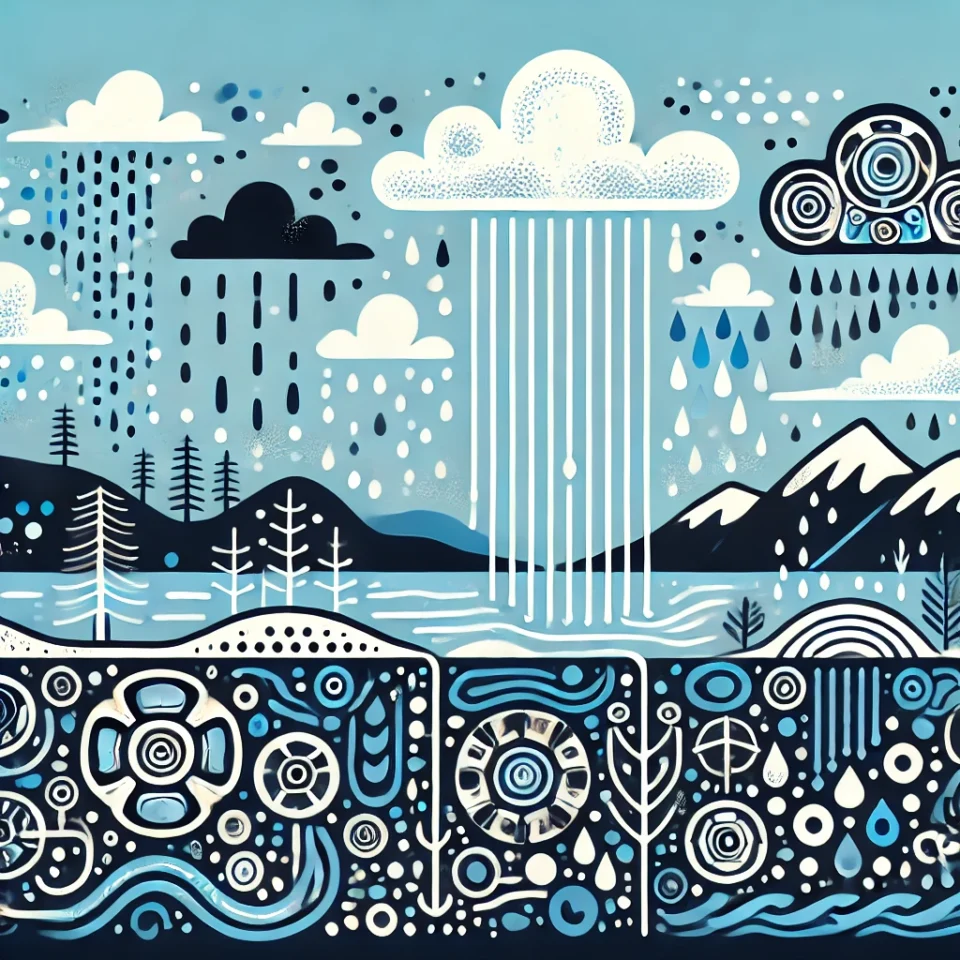 Vannets kretsløp:
Vannets kretsløp: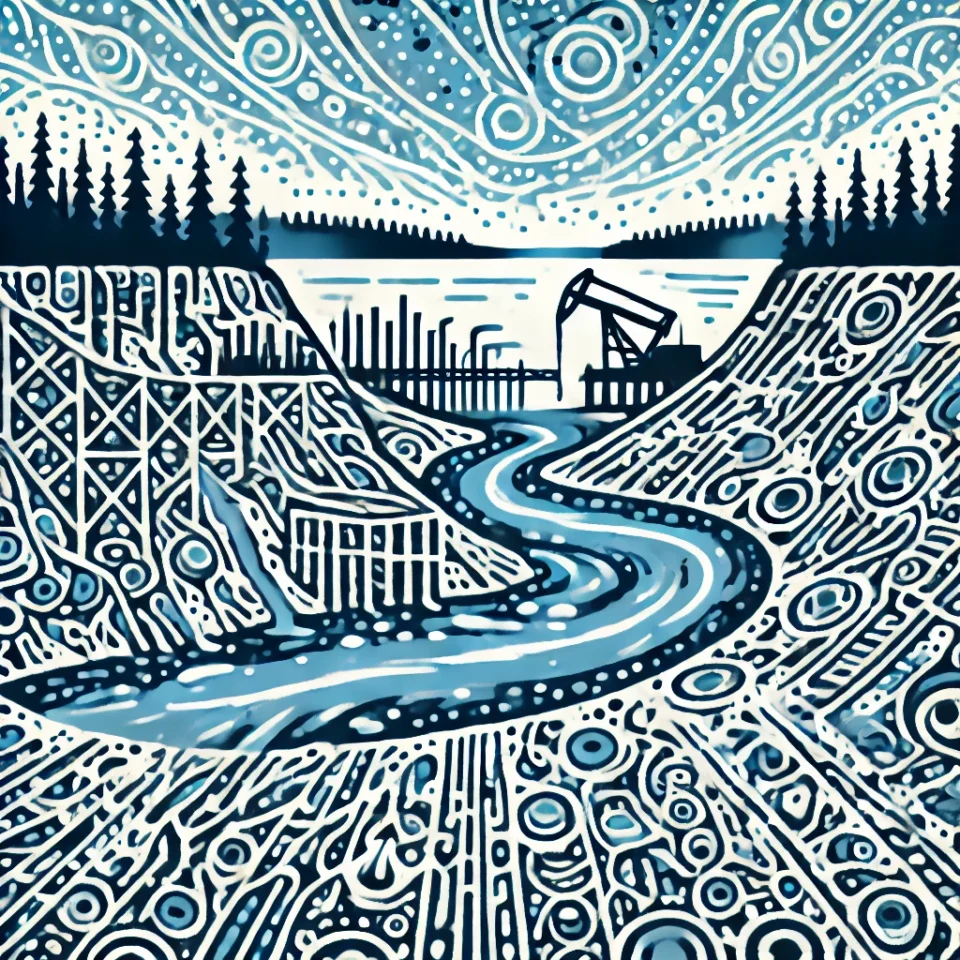
 Funksjon:
Funksjon: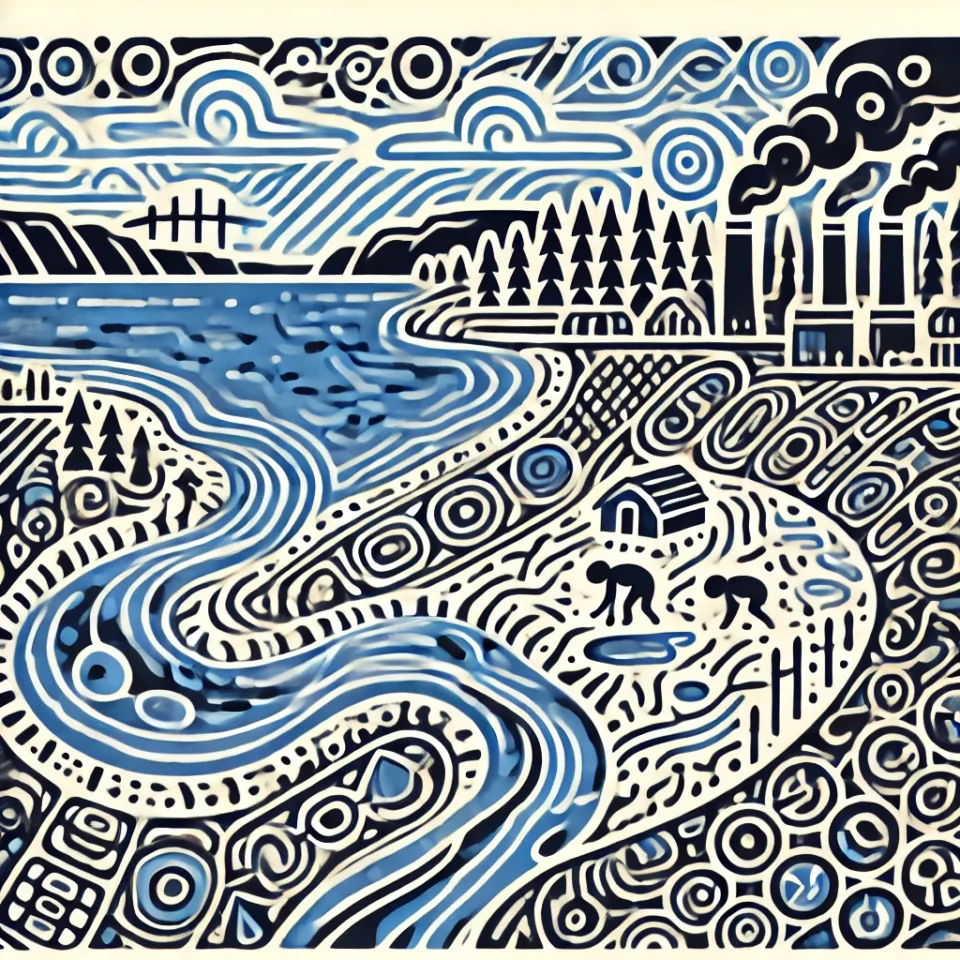 Hovedutfordringer:
Hovedutfordringer: